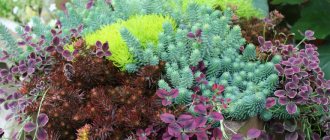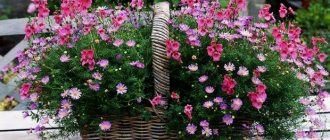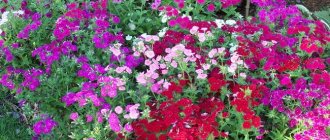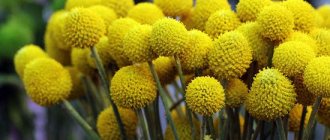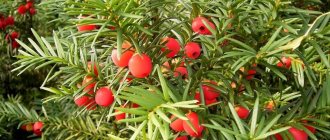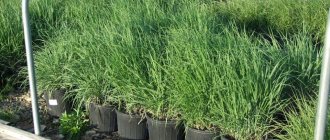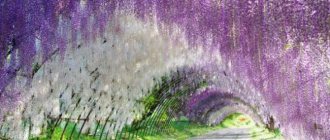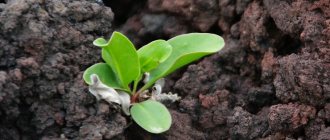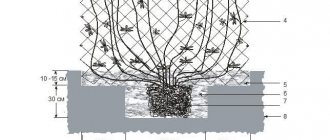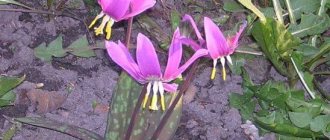- April 1, 2019
- Flowers
- Lukinova Natalya
When the time comes to choose flowers that will decorate your garden, you should definitely pay attention to the luxurious statice flower (kermek). Not only is it very unpretentious, and therefore even a novice gardener will find it quite easy to care for it, but its buds during the flowering period look so attractive that they will attract attention, making even the smallest garden a real work of art. This article contains information about statice (planting and care), the photo of which can be admired below.
Information about static
Looking at the photo of a statice flower, it’s hard to believe that for many years in Russia this plant was simply ignored, although it has been used in European floristry and landscape design for a long time. In particular, this attitude towards it can be explained by the fact that Kermek is an annual or perennial dried flower that is not particularly popular. But, despite this, statice is perfect for planting in open ground and will decorate any garden plot, since it does not lose its beauty when it fades. And after cutting it pleases the eye for a long time.
Full description of limonium
You can see the features of the plant in the photo. The description of the statice flower gives a general idea of the semi-shrub perennial herbaceous crop.
Limonium has the following characteristics:
- large rosette of basal leaf plates;
- shoots are straight, leafless, densely pubescent;
- shoot height from 30 cm to 90 cm;
- inflorescences are spike-shaped, paniculate or corymbose;
- flowers are small, five-membered;
- The color of the flower cups is white, yellow, salmon, crimson, blue, violet, pink, purple.
Description
If you pay attention to the photo of statice flowers, you will notice that in appearance this plant resembles a shrub, which, with proper care, can grow up to one and a half meters in height. Its leaves are always straight, elongated and are located mainly in the root zone, gathering into a cute rosette. The stems are densely pubescent, always tending upward, but in the upper part they are practically bare, since leaves rarely grow here.
At the very peak of flowering, which occurs in July, buds with multi-colored petals of various shades begin to appear on the statice - purple, pink, blue, yellow and white. They gather in spike-shaped inflorescences covering the entire plant.
As mentioned earlier, depending on the variety, statice can be either annual or perennial, but in Russia it is almost always grown as an annual crop, since due to its poor frost resistance, the plant’s chances of surviving the winter normally are minimal.
Botanical description
Kermek Tatarian is a perennial herb or subshrub with large, often basal leaves forming a large rosette, and straight leafless but densely pubescent stems ranging from 30 to 90 cm in height. Small five-membered flowers of Kermek with calyxes of white, yellow, blue, indigo, violet, salmon, pink, crimson or purple in color are collected in spikelets that form corymbs or panicles. Flowering of statice lasts from July until frost, and the seeds do not lose their viability for 4-5 years.
Tips for caring for alstroemeria - time-tested
The Kermek plant is unpretentious, like a weed, but it has gained popularity among gardeners not only for this quality. The advantage of statice is its high resistance to diseases and pests, moisture deficiency and other unfavorable external factors. Kermek flowers are indifferent to the composition of the soil, require virtually no care and do not particularly need fertilizing. The plant only does not tolerate stagnation of water in the roots, shade and frost, so in the middle zone perennial kermek is grown as an annual crop.
- Liatris: cultivation, types and varieties
In the photo: Kermek in the garden
The perennial kermek reproduces well by self-sowing, blooms profusely, its fringed panicles last a long time when cut, so florists often use statice to create compositions and bouquets, including dry ones.
Plant varieties
Before purchasing, you should carefully examine the photo of statice flowers, since now there are a huge number of varieties of this plant, and in this way you can find exactly the one that will attract attention. The most popular varieties that can now be found on the market are the following:
- Notched statice. It is a small shrub that usually does not grow above half a meter. Its buds are very small, their diameter does not exceed 1 cm, but the flowers are very bright: purple, pink or white.
- Chinese kermek. It was grown relatively recently, but has already begun to gain popularity among gardeners. In the photo of a statice flower of this variety you can see flowers of extraordinary beauty. Although they are small, it seems as if the petals are woven from delicate cream or white lace.
- Gmelin's statistic. It is a variety of blue statice. It is she who can mainly be found in the middle zone. However, of all the known varieties, it is the most unpretentious and cold-resistant, and therefore can adapt to the climate of any region of the country. Gmelin's statice does not grow large - the height does not exceed half a meter. But at the same time it blooms very beautifully, since small buds are collected in large inflorescences that have the shape of a shield.
Types and varieties
The following types of statice are most often grown in culture:
Statica Suworowii (Limonium suworowii)
Or Suvorov's plantain (Psylliostachys suworowii) - a species about 60 cm high with long spike-shaped inflorescences of pink or pink-lilac flowers.
In the photo: Statica Suworowii (Limonium suworowii)
Gmelin's statice (Limonium gmelinii)
This is a winter-hardy perennial up to 50 cm high with blue-violet flowers collected in a large corymbose inflorescence:
Broadleaf Kermek (Limonium latifolium)
A plant 60-75 cm high with large basal leaves and blue-violet flowers collected in a spreading paniculate inflorescence.
The best varieties of this species are:
- Violetta is a plant with dense purple inflorescences;
- Blue Cloud is a variety with lavender flowers.
In the photo: broadleaf Kermek (Limonium latifolium)
Kermek Perez (Limonium perezii)
A species common in the Canary Islands, where it was introduced into culture. Statica Perez is a plant with shoots up to 60 cm high and decorative large inflorescences of a purple hue, which florists willingly use for both fresh and dry compositions.
Pictured: Kermek Perez (Limonium perezii)
Kermek Bonduelli (Limonium bonduellii)
Originally from North Africa. This is a perennial up to 90 cm high with delicate stems without ridges and loose inflorescences consisting of large yellow or white flowers. The species has been in cultivation since 1859. There are no varieties of statice Bondwelli, but its seeds are often included in flower mixtures.
Chinese Kermek (Limonium sinensis)
Introduced into culture relatively recently. In temperate climates, this perennial is cultivated as an annual plant with a basal rosette of glossy, dense leaves, from the center of which numerous thin flower stalks rise from 50 to 70 cm in height, bearing openwork inflorescences of small yellow flowers surrounded by cream or white funnel-shaped perianths.
The best varieties of Chinese statice:
- Confetti is a plant 45-50 cm high with graceful white-cream inflorescences;
- Elegant is a variety up to 70 cm high with the same creamy white flowers.
In the photo: Chinese Kermek (Limonium sinensis)
Notched Kermek (Limonium sinuatum)
Originally from Asia Minor and the Mediterranean. It is a herbaceous perennial cultivated as an annual crop. The stems of plants of this species are up to 60 cm high, numerous oblong thin basal leaves of a light green hue, pinnately lobed or pinnately divided, are located on short petioles. Peduncles are erect or erect, branched in the upper part. Small flowers up to 1 cm in diameter have dry, pubescent wheel-shaped cups of pink, white or blue-violet hue and a whitish or pale yellow corolla. In cultivation, this species has been the most popular among gardeners since 1600. On sale you can find imported and domestic flower mixtures of statice. For example:
- Yew: planting, care, propagation and transplantation
- Crimean statice - a mixture of plants with a height of 30 to 80 cm in pink, blue, yellow or purple shades;
- Mixed Hybrids - varieties up to 45 cm high with purple, white, yellow, blue and pink inflorescences;
- statice Supreme - a series of varieties about 60 cm high in different colors;
- Shamo - a series of varieties up to 70 cm high in different shades of salmon color;
- Fortress - bush height 70-80 cm, flowers purple, yellow, white, blue or pink;
- Compindi - a series of varieties with blue, blue and pink flowers on bushes up to half a meter high;
- Petite Bouquet series - compact bushes up to 30 cm high, abundantly covered with inflorescences of pastel colors: white, blue, lilac, soft pink or cream.
In the photo: Notched Kermek (Limonium sinuatum)
In addition to multi-colored mixtures, you can purchase single-color varieties of notched statice:
- Blue River is a plant about 50 cm high with sky blue inflorescences;
- Epricot is a variety about 60 cm high with salmon-pink flowers;
- Lavendel - a bush up to 80 cm high with lavender flowers;
- Iceberg - a variety 75 cm high with white inflorescences;
- Nachtblau - dark blue inflorescences on bushes up to 90 cm high;
- Rosenshimmer and Emerican Beauty - carmine-pink flowers on a bush 60 cm high.
Reproduction
If you are wondering how statice is grown, then the first thing to understand is that the vegetative method, which is suitable for most other plants, simply does not work here. The root system of this flower is so weak that it almost never tolerates any transplants, and therefore the plant simply will not survive such interventions. To grow kermek seeds, it is better to buy seeds in a store specializing in gardening supplies.
So, now let's talk about how to grow statice from seeds at home. In fact, you should prepare for the fact that this will be quite difficult, since caring for the flower is quite easy. And the reproduction process is very complex and labor-intensive, and requires careful adherence to a number of rules.
Features of reproduction
Since the root system of Kermek does not tolerate division well, the vegetative method of propagation is practically not used.
To propagate limonium, the seed method is used. The main difficulty in propagation lies in germinating seeds. They are covered with a dense, thick, ribbed skin that cannot be peeled.
You can speed up the germination process:
- rub the Kermek seeds with sandpaper;
- treat with a growth stimulator (Epin);
- germinate for 2-3 days in well-moistened sawdust.
The prepared seeds are placed in a well-moistened, disinfected, loose substrate in separate containers (peat or humus pots, glasses). The seeds are not buried in the soil, they are sprinkled with a little soil and create a greenhouse effect.
The optimal temperature for growing Kermek seedlings is not lower than + 20 ⁰С. Periodically, the cover is removed and the crops are sprayed. After 2.5-3 weeks, the first shoots appear.
Sowing statice seeds for seedlings under indoor conditions is carried out in February
Growing process
The most important question in growing statice from seeds is when to plant the plant, as well as how to properly prepare it for this process. The first step is to prepare the seeds, which are covered with ribbed shells. It is because of this that germination will be very difficult, since peeling off these shells is not recommended. But if this is not done, then you will have to wait a long time for the result. One small trick was invented for this purpose. You just need to take fine sandpaper and walk the seed over it several times, then immerse it in a mixture of sawdust and Epin, which will first be thoroughly moistened.
The seeds themselves are immediately planted in separate containers, so as not to subsequently damage the roots of the flower by transplanting. It would be best to purchase standard peat pots. Also, for normal growth, statice requires a special soil, which is made by adding sand to the soil, then sifting this mixture and calcining it in the oven for a couple of hours at a temperature of 100 degrees. After these manipulations, you will also need to disinfect the soil with a solution of potassium permanganate, and then simply water it.
When the soil mixture is ready, the seeds can be placed in the ground. It is best to carry out this procedure at the very beginning of spring, so that by summer the seedlings are already strong. The seeds planted in pots are covered with film and then placed in a bright place where the air temperature fluctuates around 20 degrees. So they should stand for about a couple of weeks, after which the first shoots can be noticed. However, do not forget that the film must be removed at least once a day to check the soil moisture and allow the plant to breathe.
Growing statice from seeds
Sowing seedlings
Before sowing for seedlings, it is advisable to scarify Kermek seeds, enclosed in a dense shell: walk along their spouts with sandpaper or a rough file, then soak them for several hours in Epin’s solution or keep them in damp sawdust for 2-3 days.
Sow statice for seedlings in February or early March, placing one seed at a time in humus or peat pots with a moist, loose, sterile substrate. The seeds are sprinkled with a thin layer of soil on top, the crops are covered with glass and kept at a temperature of 16-21 ºC. Under such conditions, seedlings may appear within 10-18 days. If you are in a hurry, use the bottom heating system, and then the seeds will germinate earlier.
Seedling care
Growing Kermek from seeds requires daily ventilation of the crops, and after the seedlings appear, it is necessary to regularly water the plants and carefully loosen the soil around them. If you grow seedlings in a box, container or in small cassettes, at the stage of development of the seedlings having two true leaves, they are picked into separate cups or pots.
Do not delay picking: statice has a too voluminous and rapidly developing root system with a long taproot.
In the photo: Large statice flowers
In mid-April, begin hardening procedures: take containers with seedlings out into the open air every day, gradually increasing the duration of the walk. When statice from seeds can spend the whole day outside the apartment, it can be planted in the garden.
Transplantation into open ground
As soon as the plant has strong roots, you can transplant it into open ground. This usually happens at the very end of spring or at the beginning of summer, when the soil has already warmed up and cannot harm the flower. After this, you need to make holes that will match the size of the peat pots, and then carefully place the seedlings in them and secure them. At the very end, the plant must be watered with salt water, which is prepared by adding 1 tablespoon of salt to 10 liters of warm water.
Popular types of statice
So, the plant is popular, but several varieties of statice are especially in demand, including the following:
| Varieties | |
| Suvorova (plantain flower) | The height of this herbaceous plant does not exceed 60 cm, the flowers are pink or mauve. |
| Gmelin | It is cold-resistant, reaches 50 cm, blue-violet flowers. |
| broadleaf | Height up to 75 cm, spreading panicles, including small flowers of intense blue-lavender hue. |
| Perez | Large purple flowers, up to 60 cm high. |
| Chinese variety | Beautiful white and cream inflorescences. |
Features of watering
As previously mentioned, statice is a very unpretentious plant, and therefore minimal care is required. In particular, this applies to the watering process. Statica practically does not need excess moisture, and therefore it needs to be watered very rarely. Even during the hottest period of summer, in July and August, you should not do this more often than once every month and a half. Watering should be done with warm, settled water. This is done in the evening, and water is poured directly under the root. However, for the entire season, the flower must have one special watering - with salt water (done at the rate of 6 tablespoons of salt per bucket of water). In order for the plant to have enough moisture for the entire season, it is necessary to periodically loosen the soil around the plant itself.
Feeding and fertilizer
Statica also does not particularly need a variety of feedings. You should think about this only in cases where the natural soil in the garden is not nutritious, and therefore the plant cannot independently obtain the amount of nutrients it needs. In this case, the first fertilizing should be done a week after transplanting the seedlings into open ground. To feed statice, exclusively mineral fertilizers are used. After this, any fertilizing directly depends on the nutritional value of the soil, so you can apply fertilizer in the summer within a period of 2 to 5 weeks. However, with the onset of autumn, any feeding should stop completely. In cases where the land has good fertility, fertilizing is not required at all.
Caring for statice
Growing conditions in the garden
Statice in open ground will grow without your participation. What is her care? Infrequent watering and loosening the soil around the bushes while simultaneously removing weeds. Watering is only needed when the leaves begin to lose turgor. If the summer is rainy, you don’t have to water the plant at all, but it is still advisable to loosen the soil from time to time. In dry summers, Kermek is watered twice a season, and one of these waterings is carried out with salted water, dissolving 7 teaspoons of salt in a bucket of water.
Watering is carried out at the root, in the late afternoon, using water that has been settled and heated during the day.
Growing statice does not require mandatory fertilizing, but if it grows in poor soil, it is still better to apply it. It is advisable to carry out the first fertilizing with a solution of complex mineral fertilizer a week after planting the seedlings in the ground, and then, depending on the fertility of the soil, it is fertilized once every 2-4 weeks. From September, feeding is stopped. Statice growing in fertile soil does not need to be fed.
Pests and diseases
In a rainy summer or as a result of frequent and abundant watering, statice in a flowerbed can become infected with botrytis, a rot of vegetable crops, which can be eliminated by treating the bushes with a fungicide solution. Sometimes white mold appears on the plant - a sign of oidium disease. In this case, you should resort to spraying Kermek with a sulfur-containing preparation. In general, statice is extremely rarely damaged by pests and diseases, and with good care this does not happen at all.
- Castor bean: cultivation, planting and care
In the photo: Kermek of different colors in a bouquet
Even a novice gardener can plant and care for statice, and if you manage to grow Kermek seedlings, then no difficulties are foreseen in the future.
Statica after flowering
Some types of statice can withstand frosts down to -30 ºC, but these plants require some preparation for winter. When the winter-hardy kermek begins to turn yellow and dry out, cut off its leaves and stems at ground level, then cover it with straw, pine needles, leaves or brushwood, and lay a non-woven covering material on top of them, which will protect the kermek not so much in winter from frost as in spring from melt water The material needs to be pressed to the ground with something.
Caring for lilies in the garden - everything you need to know
Dry bouquets can be made from cut statice inflorescences. The inflorescences are cut off before they begin to dry out and fade in the sun. After cutting, they are kept upside down and hung in a well-ventilated, dark room until completely dry. Dried Kermek flowers retain the brightness of their cups for more than a year.
Diseases and pests
Statica is one of the most resistant plants to both pests and infections that are found in our country. If you do not harm its root system, then it will be very difficult to destroy or damage the flower, and with proper care you won’t even remember the word “disease”. The only dangerous disease for statice is botrytis, which can affect it due to abundant moisture caused by frequent rains or watering. In these cases, you should simply use a fungicide. Oidium can also cause damage, which can be treated by spraying the plant with preparations containing sulfur. In all other cases, the plant will be an excellent garden decoration for the whole year.
Wintering
In the middle zone, statice is grown as an annual, so in this case the issue of wintering is irrelevant. As for latitudes, where it is warmer, certain techniques are needed. More specifically:
- Trim stems and leaves.
- Cover the bush with straw or dry leaves.
- A non-woven covering material can be laid on top. Moreover, this is necessary not for protection from frost, but from excess moisture, which will definitely be in the spring.
- In February, when the snow melts, it should be removed along with the covering material.
Statica is beautiful, original, although quite unpretentious in care, but it requires some effort in the first stages of cultivation. A huge number of varieties and excellent decorative qualities have made this plant very popular.
